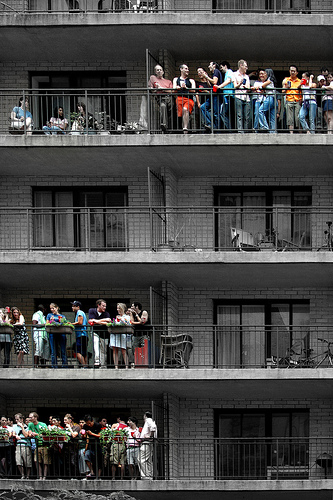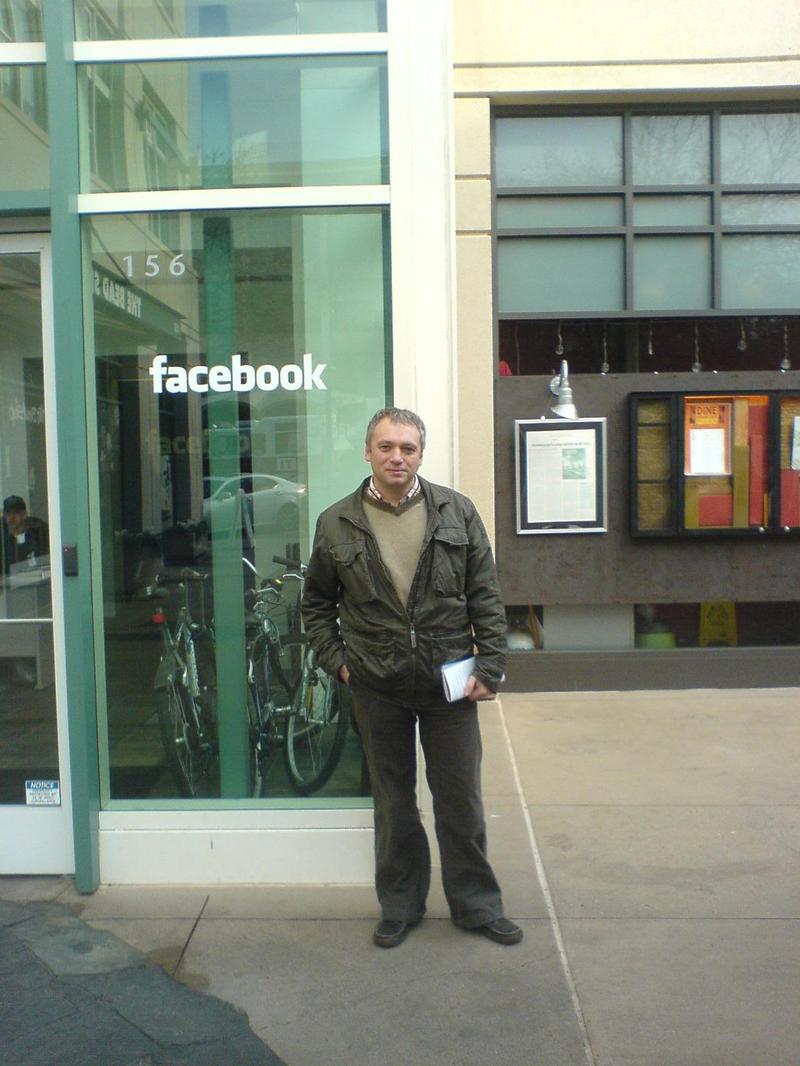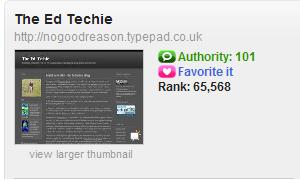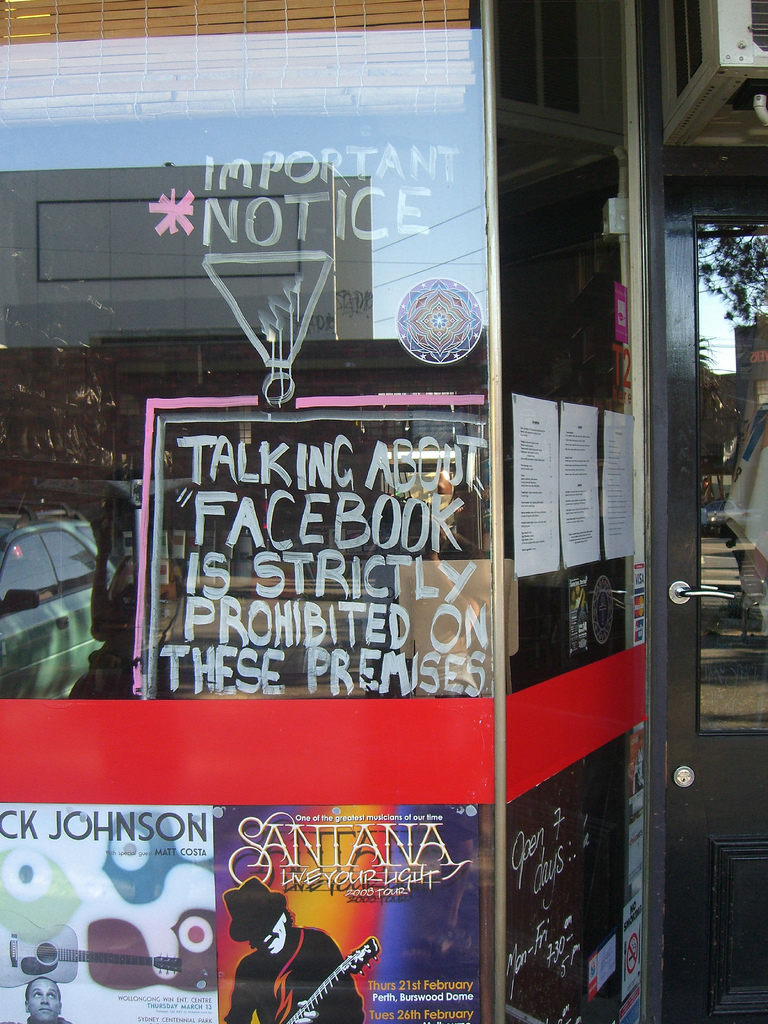
(Image 'Socializing' Noamgalai http://www.flickr.com/photos/noamg/218169158/)
This is a follow up to my earlier post on Social Objects in Education, and is an attempt to wrap up some of the discussion around it and the thoughts these have prompted.
In my Twitter stream John Connell said he wondered if there was something of a tautology around social objects. I think I know what he means, and it relates to a point I'll come to later on definitions. Put simply the argument goes something like 'what's a social object?' Answer: 'It's an object that's social.' Something is a social object if it acts as a social object - the danger with this kind of circular definition is that it doesn't really get you very far. (I have similar reservations about deep and surface learning by the way). For now, let's park this objection (hope that's okay John) and hope it will work itself out if we continue to explore the concept.
Josie Fraser commented that
"Profiles ARE social objects. They're not a real person - they're a
constructed representation around which interaction takes place - a
specific kind of social object. They are artifacts which connect and
make visible networks."
This extends the definition of a social object beyond the 'mere' content I was considering. Your user profile in Facebook, say, is itself a social object since you choose what information to display. I think this is true, if one considers FB, by choosing what applications to install on your profile you are creating a social object. In essence, you are throwing out a number of social hooks to the community to see which ones catch. For instance, if I install the LastFM application then presumably it's because I think the information about the last music I listened to is of some social value to my FB friends, however small that value is (I know most people's waking thought isn't 'what's Martin been listening to?'),
My colleague Andy Lane argues that content can be seen as a mediating artefact, which reminds me of the work of Grainne who argued that
Mediating
artefacts help practitioners and students to make informed decisions and
choices in order to undertake specific teaching and learning activities. By
using this concept of MAs and grounding this in relevant socio-cultural
literature it is possible to begin to identify which MAs are appropriate for
particular users in particular circumstances.
(Conole, G. (2005), ‘Mediating artefacts to guide choice in
creating and undertaking learning activities’, presentation
at CALRG seminar, Open University, 1st November 2005)
She argues that models, narratives, learning designs can form this function. Does this mean we should bundle them in under the social object umbrella too?
Stephen Downes says he doesn't agree that the network is built around the object (Hugh MacLeod's conjecture), instead arguing that
these so-called "social objects" - images, videos, and the like - constitute a vocabulary that is used by members of a network.
Let's say the social objects in this case are some academic pieces of content for now, e.g. some AV, articles, books, etc on a particular subject. In the sense that the objects inform the dialogue between the participants, and they talk about the objects, then yes, they do constitute a form of vocabulary. For example, learner1 might say 'but we saw in the Wisdom of the Crowds that the mass can make immediate judgements that are better than any single member of the group.' Here 'the Wisdom of the Crowds' is part of a shared vocabulary, the book is the social object, and that is used by the members of the network as Stephen suggests.
However, also imagine this scenario - learners with an interest in, say Ancient Greece in a social network share content resources (through something like the visual bookshelf) and then decide to come together for a discussion on, say, the role of Themistocles in ancient Greece, around a wiki article on him. In this sense, it is more than a shared vocabulary they are using (although they need that too), but the social object (the resources and the wiki article) are the social objects which are igniting and focusing their discussion.
Lastly, David Wiley links us back to the work on learning objects, and in particular the metaphor he proposed then of the campfire - ie the social glue that brings people out of their tents:
Without a campfire all you have is a bunch of tents setup and people
wandering around disconnectedly. The campfire provides a place for
people to congregate and interact. The campfire appears before the
singing starts.
That last point is significant - the campfire appears before the singing starts, not the other way round. In the comments I replied to David saying that the link to learning objects occurred to me also for two reasons:
i) Are social objects just learning objects that you deliberately create with social interaction in mind (lots of work on LOs seemed to be about interaction
with the LO itself, ie they were conceived as multi-media objects)
ii) like with LOs the debate around social objects quickly becomes
bogged down in one of definition. Almost every discussion I had about
LOs started and ended with ‘but what is a learning object?’
I'm not entirely sure where this leaves us regarding social objects. Part of these blog posts is to help me think it through in a social manner, as all the above comments demonstrate. Rather like terms that become popular in academic circles the debate is often about whether they really add anything. Affordances was another such term, which once it moved beyond the strict Gibsonian interpretation became too loose for many people to be comfortable with. I take a fairly pragmatic stance on the use of such terms - don't get bogged down in an exact definition, if you have an intuitive take on what they mean and it helps stimulate thought, debate, development or research then that's good enough. And that's where I am with social objects at the moment.








